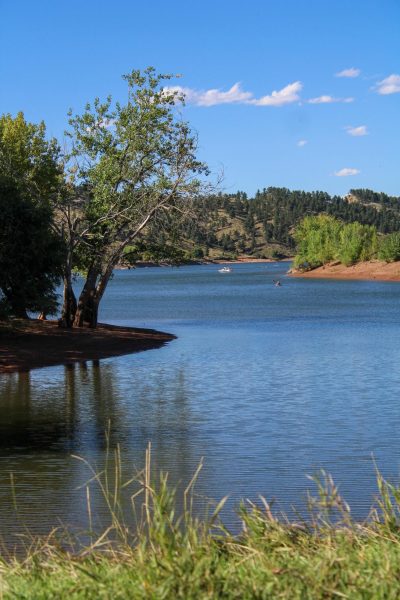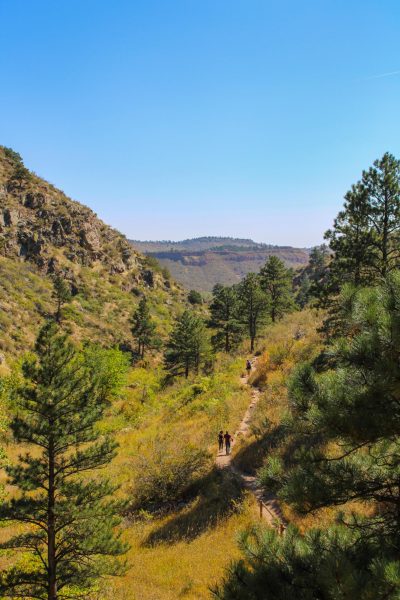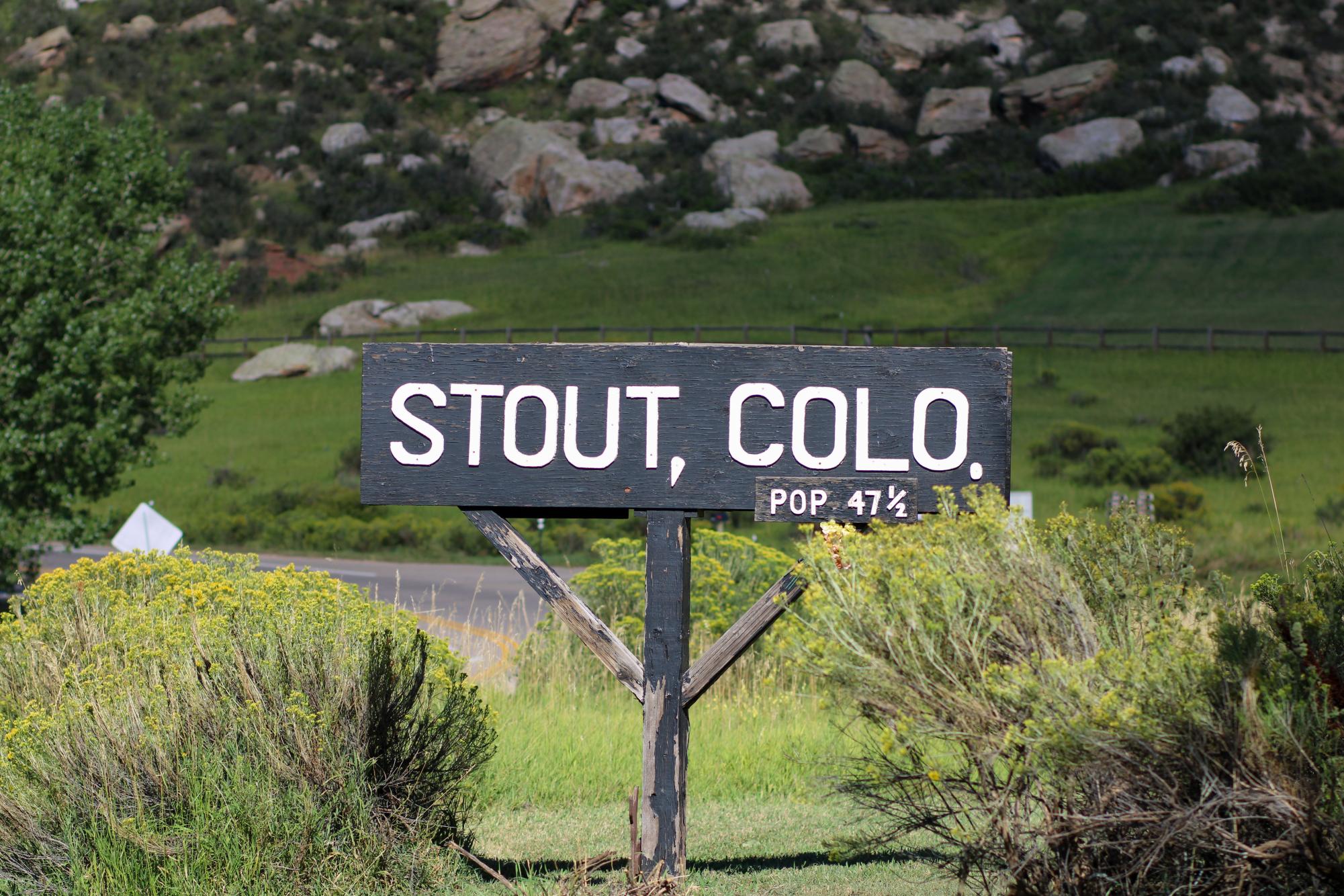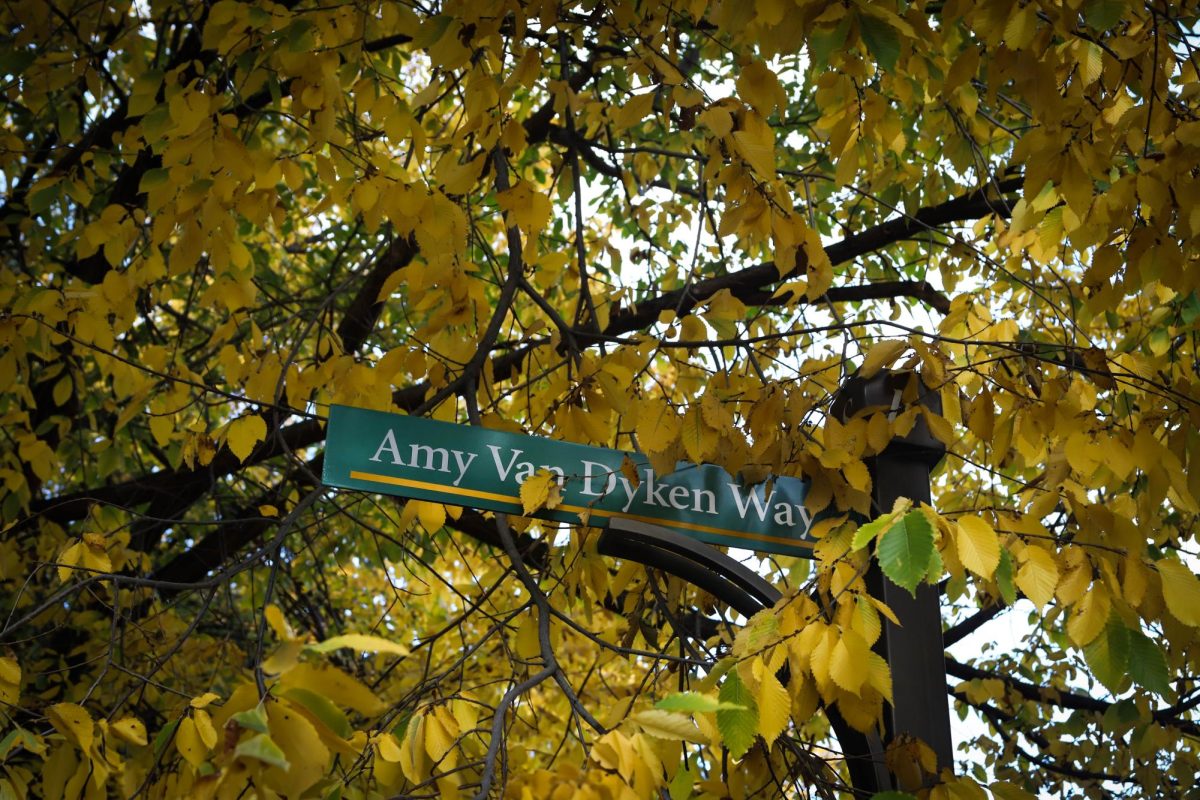Nestled in the mountains of Larimer County, Horsetooth Reservoir and the land around it has been a vital part of Fort Collins’ history for over a century. Born out of the city’s need for a reliable water source, this man made giant began construction in 1946 and became a favorite among locals and students of Colorado State University.
Locals can be found at the reservoir enjoying numerous hiking trails, swimming, kayaking, and so much more. But when everyone is busy enjoying the rocky shores, brisk water, and outdoor air, are they aware of what lies beneath the water?
160 years ago, Horsetooth Reservoir wasn’t even a thought in anyone’s mind. The valley that Fort Collins’ water supply now occupies was once home to a prosperous mining town named Stout.

(Avery Coates)
Established in the 1860s, Stout, Colo. was located just southwest of Fort Collins. It was created as a camp for miners who worked at the nearby sandstone quarries, as it was in high demand at the time.
The stone was used to build sidewalks across Colorado and Nebraska and the Colorado State Capitol. It was even shipped as far as Chicago for the construction of the Chicago World’s Fair buildings in1893.
Stout also became a popular destination for Fort Collins’ residents, but not because of the scenery or town. At the time, Fort Collins had a 70-year-old prohibition restricting locals from purchasing alcohol within city boundaries. Stout became the go-to location to purchase alcohol and visit bars.
Fort Collins and Stout city officials were unhappy about this. They worried the excessive alcohol would lead to drunken drivers being a danger on the roads.
Disaster struck for Stout’s booming sandstone business in 1889 when Denver and several other cities began paving their streets with asphalt and using concrete instead of stone to construct buildings. Economic hardship struck Stout and by the start of The Panic of 1893, one of the most severe economic depressions in United States history, the town’s economic standing was demolished.
Miners and their families began leaving the area looking for work, dwindling the population, though the town remained populated into the 1940s.
In the 1940s, the Colorado-Big Thompson Project, a federal water diversion project with goals to redirect water towards the Front Range, gained interest in Stout. The United States Bureau of Reclamation began surveying the area and temporarily set up in the old schoolhouse.

(Avery Coates)
After acquiring the property in 1946, the USBR started developing plans to flood the valley. By 1949, the dams finished construction, and the valley was flooded by 1951, creating what is now known as the incomparable Horsetooth Reservoir
Since its creation, a small community has developed around the southern edge of the reservoir which is locally known as “South Bay”. Although the community is not officially “Stout”, a sign at the entrance of the community reads “Stout, Colo. population 47 ½”.
The former townsite is located under the south end of the reservoir and on days when the water level is low, the tower of the old hotel is still visible.
Horsetooth Reservoir, with its rich history and multifaceted significance, stands as a testament to the harmony that can exist between human development and the natural world. Almost a century after its creation, it remains a vital resource, a recreational paradise, and an enduring symbol of Fort Collins’ connection to the beauty of the Rocky Mountain foothills.
As Fort Collins continues to evolve, the legacy of Horsetooth Reservoir will continue to shape the community and remain as a staple for years to come.














